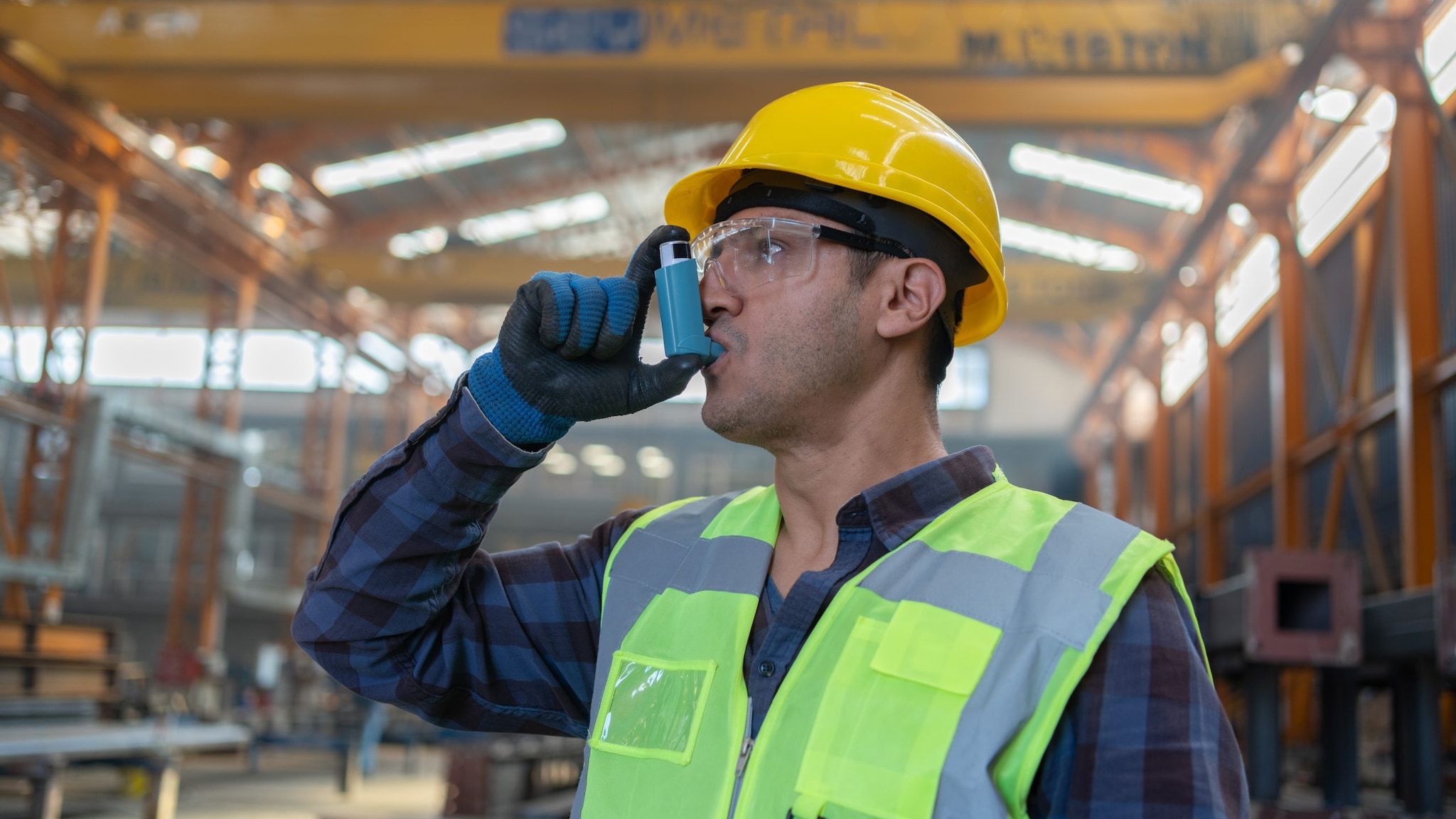What to know
Minimizing exposure to work-related asthma triggers can help employees to be healthier. The following guidelines can help employers and employees develop and maintain a worksite safe from asthma triggers.

Employer

The hierarchy of controls is a multi-faceted approach to eliminate or reduce workplace hazards. This approach includes the following:
- Eliminate hazardous processes or materials from work tasks.
- Substitute by using less hazardous processes or materials.
- Install engineering controls. Examples include isolating or enclosing processes or installing local exhaust ventilation.
- Implement administrative controls such as work practices, policies, and worker training.
- Personal protective equipment (PPE) such as respiratory protection.
PPE should not be the sole method for protecting workers. Eliminate, substitute, and use effective engineering and administrative controls together with PPE.
Medical surveillance
Some employers might want to consider establishing a medical surveillance plan to monitor workers for asthma. Medical surveillance plans can help identify workers with asthma at earlier stages of disease. This can eliminate workers from exposure and prevent disease progression. Surveillance can be as simple as periodically completing a questionnaire. Plans should also include:
- Periodic screening of workers for symptoms of asthma
- Follow up medical testing when appropriate
Additional testing, such as evaluating for sensitization with allergy skin tests, has also been used.
If there is not an established medical surveillance program, consider consulting with an occupational physician to discuss monitoring options.
Employees
Employees should pay attention to their work environment, especially those with breathing problems. Follow the steps below if you feel you have work-related asthma symptoms.
- Identify and avoid exposures to asthma triggers.
- Participate in your employer's asthma surveillance plan, if available.
- Report new or worsening breathing problems to your doctor and the designated person at your workplace.
- Report if personal protective equipment or engineering controls malfunction to your supervisor or designated person.
- If you have asthma, take your medications as prescribed and regularly see your doctor.
- Get a flu shot every year and stay up to date with COVID-19 vaccines.
- If you smoke, talk to your doctor or employer about resources to help you quit smoking.
